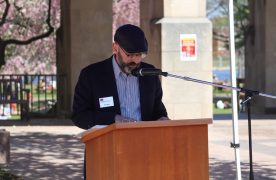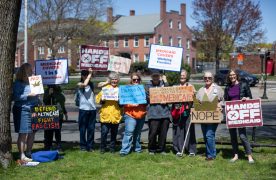At the Old State House Museum in downtown Boston, visitors can now catch a glimpse of a greater variety of the revered and sometimes random artifacts that have played an integral role in Massachusetts’ history in its new exhibit, “Our Favorite Things.”
For the exhibit, museum staff chose their favorite items from the museum’s extensive collection, which is so large only 3 percent of its artifacts can be displayed at a time.
According to the historical society’s website, visitors will see “the more fascinating things hiding in storage,” many of which are being dusted off for the first time.
Unusual items in the exhibit include a lock of Daniel Webster’s hair, a catcher’s mitt from 1898 and a tree root from Napoleon’s grave. Congressman Preston Brooks’s cane — which he used to violently beat Massachusetts Sen. Charles Sumner in 1856 after Sumner gave a speech in support of abolition – is also on display.
The museum’s main exhibit, “From Colony to Commonwealth,” features artifacts from important events that led to the Revolutionary War. According to the historical society’s website, the exhibit uses hundreds of images and artifacts to “trace the changing relationship of the colonial citizens to the crown, the break with England and the establishment of a new state.”
The exhibit includes a bottle of tea recovered from the Boston Tea Party of 1773 and weapons used in the Battle of Bunker Hill.
Another exhibit chronicles the history of the museum building itself. Built in 1713, it has served as the state house, city hall and a landmark.
“It is natural that the site would play a central role in the story of the rebellion, from the bloody Boston Massacre in 1770 to the reading of the Declaration of Independence from the balcony in 1776,” the Bostonian Society explains on its website.
With plans underway for a hands-on family exhibit, the museum is growing as it makes much-needed repairs to certain parts of the building affected by serious water damage.
“2006 promises to produce some real news [for the museum],” wrote Executive Director Brian LeMay in the Bostonian Society’s Spring 2006 newsletter.
This is an account occasionally used by the Daily Free Press editors to post archived posts from previous iterations of the site or otherwise for special circumstance publications. See authorship info on the byline at the top of the page.













